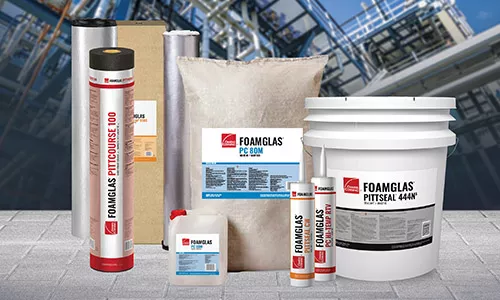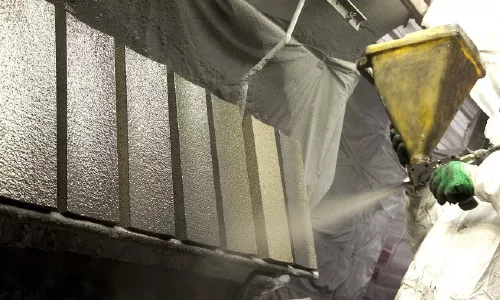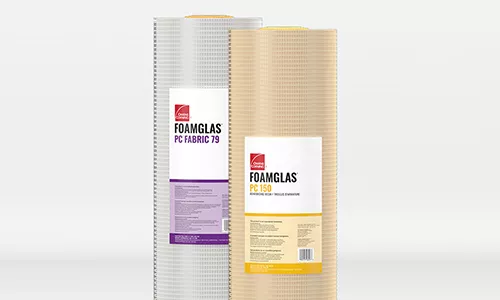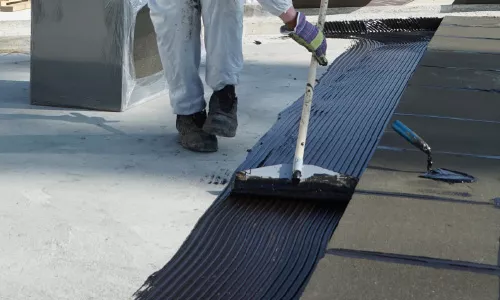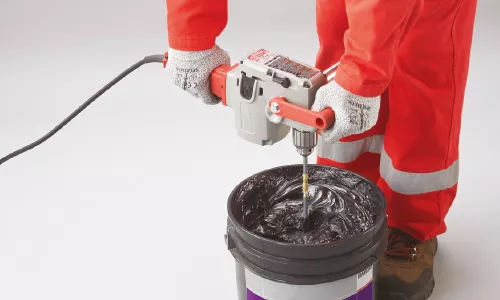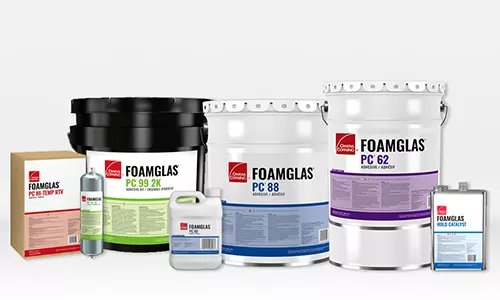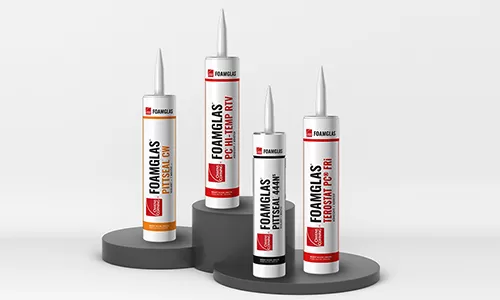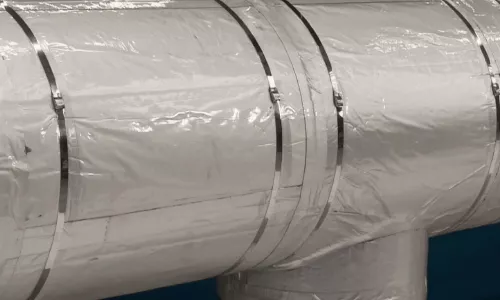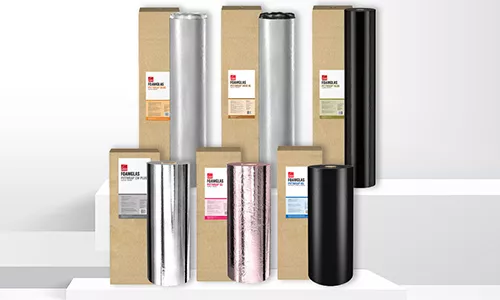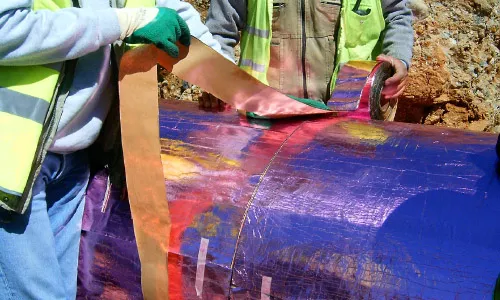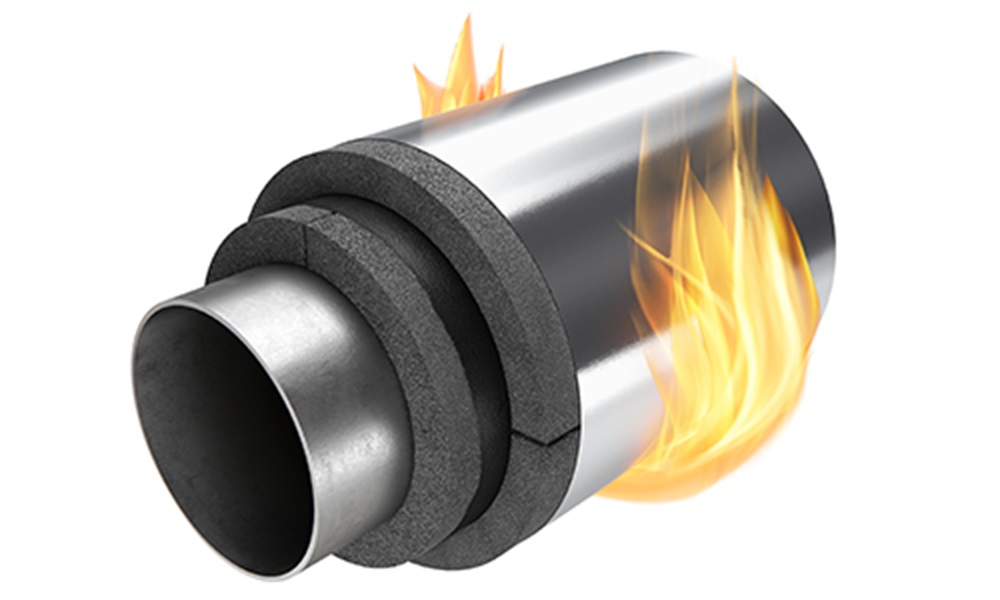The importance of a total systems approach for insulation system performance

With insulation, emphasis is often placed on details such as physical characteristics, thermal or fire performance, and the environmental impact of each component of the overall system. However, when looking at the total insulation system, the importance of compatible accessory products such as coatings, sealants, fabrics and jacketing is often overlooked.
Some view the accessory products as commodities that you can mix and match and to get the same performance. But the fact is if high quality, compatible accessories are not used, the dependability and durability of the system could be placed at unnecessary risk. History, performance in the field, and laboratory evaluations have proven this to be true.
All parts of the system must be thought through and carefully chosen. Unfortunately, final product selection is sometimes changed at the last minute by the contractor without informing the end-user or consulting the designer. Keep in mind that the contractor is typically only accountable for the installation work and resulting system performance for a relatively short time following installation when compared to the expected life of the system.
Decisions in the construction industry are often increasingly based on saving money rather than guaranteeing performance. When an insulation system is proposed for a project, it has been designed to meet the specific requirements necessary to perform in that particular environment. Changing parts of the system with products that have not been evaluated and recommended by the manufacturer can lead to underperforming insulation systems and severe consequences for personnel and infrastructural safety.
Although some accessory suppliers of lower cost products claim the same performance as the manufacturer-tested and approved accessories, there is often no credibility to those statements. There are major differences in the physical and chemical properties of all these products. These differences become apparent during testing and in-service performance after application. For this reason, we always recommend the adoption of a “total system” approach to specifying insulation and accessory products. The total systems approach is the only way to achieve the expected result of a high-quality, long-lasting insulation system.
Coatings
We have evaluated numerous coatings for potential use in FOAMGLAS® cellular glass insulation systems. Potential candidates are tested for chemical resistance, weather resistance, durability, and evaluated for overall appearance. Special attention needs to be paid to the fact that FOAMGLAS® insulation is a unique material which leads to different requirements for accessory products intended for use with FOAMGLAS® insulation. For instance, the outside surface cells of FOAMGLAS® insulation havea a rough texture which requires a specific viscosity mastic or coating to fill these cells and completely coat the insulation surface.
Coatings made of vinyl acetate, terpolymer, coal tar, chlorinated rubber, CPE and butyl have been found to harden, crack and/or have poor weather resistance.
When tested, many products did not meet their advertised temperature ranges, had higher shrinkage, and lost elasticity.
Although evaluations of these alternative coatings show that they perform as advertised over other insulation materials, when tested with FOAMGLAS® insulation show they fall short.
reinforcing fabrics
Exterior coatings on insulation are usually reinforced with a fabric reinforcing mesh to improve durability, enhance mechanical resistance and help bridge insulation joints. Most fabrics sold for use with coatings are made from either cotton, glass or polyester. Cotton fabric can wick water and/or solvents, which can seriously compromise the integrity of the system and is therefore not a preferred fabric for use in conjunction with FOAMGLAS® insulation systems. Preferred alternatives are alkaline-resistant glass fabric and synthetic polyester fabrics that will not wick moisture. Polyester fabrics provide high elongation that will accommodate the thermal and mechanical movements without rupture, allowing maximum movement of the coating. Both glass and polyester reinforcing fabrics have been tested and proven to offer superior performance with FOAMGLAS® insulation systems.
When selecting a fabric, attention needs to be paid to the size of the mesh. Larger openings will allow heavy mastics to penetrate the fabric to bond to the insulation. Reinforcing mesh with smaller openings can block the coating from passing through the fabric. This creates a barrier or slip surface and prevents the formation of the intended monolithic finish. Additionally, pinholes are much more likely to occur when a smaller mesh fabric is used.
Adhesives
Adhesives are used to join insulation blocks or prefabricated pieces to vessels, tanks, piping or virtually any industrial surface for which insulation is necessary. An adhesive must be compatible with the specified insulation, be appropriate for the surface to which the insulation is applied and have an acceptable operating temperature range. On porous masonry, concrete and gypsum board surfaces, solvent-based adhesives may be used. Since FOAMGLAS® insulation is impermeable, a low-solvent, hotmelt or chemical curing adhesive is required when adhering FOAMGLAS® insulation to metal and other impermeable surface.
With adhesives, the “total system” approach requires compatibility with the substrate, the FOAMGLAS® insulation, and any accessory products that the adhesive will be in contact with. Additional factors to consider for an acceptable adhesive include: operating temperature, chemical resistance, corrosion resistance, odor (important in food-processing areas), VOC content, and consistency. Maintaining flexibility over the temperature range of use should be a high priority as well.
Adhesives fall into two categories: One component (solvent or air cure products) or two component materials (products with two parts that require mixing before use).
Generally, operating temperature and corrosion resistance will be the two strongest criteria in choosing an adhesive type. Silicones provide excellent heat resistance up to 260°C (500°F) for extended periods and up to 315°C (600°F) intermittently.
Asphalt-based adhesives are recommended where corrosion resistance is a high priority due to possible contact with acids, alkalis and many chemicals. Other adhesive types include urethane, butyl rubber, polysulfide, epoxy, neoprene and styrene/polyester based products.
Adhesives approved for use with FOAMGLAS® insulation include a wide range of different adhesives types for different applications. For high-temperature applications, our one-part neutral cure silicone rubber adhesive is recommended. This product can also be used as a sealant and will withstand relatively high operating temperatures.
For low-to-moderate temperate applications between -56 °C to 82 °C (-70 °F to 180 °F), several two-part asphalt-based bonding adhesives that are ideal for adhering FOAMGLAS® insulation to porous or non-porous surfaces are available. They have excellent wetting characteristics and cure to form a flexible bond that absorbs movement, as well as mechanical and thermal shock.
These adhesives also have excellent chemical resistance and can be used in corrosive environments as a protective coating layer since they are resistant to many acids, bases, salts and solvents.
Sealants
Utilized at joints, metal jacketing laps and around protrusions, sealants are used to prevent water vapor entry on low temperature, intermediate temperature, and cyclic systems. When used with the insulation, their function is to seal insulation joints and not to mask poor-fitting insulation. Butyl sealants are appropriate for use with FOAMGLAS® insulation because of their durability and low-temperature flexibility. Sealants must remain flexible and be resealable. They must also be compatible with coatings and resist mildew formation.
For example, when our butyl-based PITTSEAL® sealants are tested against competitive sealants in a FOAMGLAS® insulation joint at 82 °C (180 °F), the PITTSEAL® sealant remained flexible, tacky, and did not crack or shrink. In the same testing, some of the competitive products hardened, lost tack, cracked or shrunk after only two weeks.
An approved MS polymer-based sealant alternative is also available to comply with the strict VOC regulations typically found in chilled water applications. This sealant offers the advantages of both silicone and polyurethane sealants in one product, without the disadvantages of either.
Jacketing
Jacketings are prefabricated sheet goods that are not brushed-, trowel-or gun-applied products. Their main function is to provide mechanical protection on either above-or below-ground installations and, secondarily, to act as a weather, vapor, or moisture barrier. Jacketings may be metal, single-layer plastic, multi-ply laminates, or modified asphalt/butyl rubber materials incorporating various materials.
A major concern with using metal jacketing alone (plain or coated aluminum or stainless, galvanized or coated steel) is that its not a vapor barrier system when used over insulation. Once water enters these systems through the laps or seams, it may be impossible to remove. While the system retains moisture, the metal hides the deteriorating insulation, which eventually will be destroyed. This can also lead to corrosion under insulation (CUI). In high wind areas, metal cladding is subject to blow-off. Sealing around protrusions is difficult with metal, and performance is often unreliable.
Although plastic jacketing has a relatively low perm rating, excellent chemical resistance and good impact resistance at normal temperatures, its ideal use is on indoor systems or under a metal jacket on above-ground outdoor installations that require additional weather or water resistance. For exterior applications, only ultraviolet (UV) -stabilized material such as coated PVC should be used. Even then, the plastic jacketing life may be short on outdoor applications. Keep in mind that thermal expansion of plastic is high, and service temperatures are limited to a maximum of 65 °C (150 °F).
For most indoor systems, laminates are the preferred jacketing. On indoor applications using FOAMGLAS® insulation the primary function of a jacket is mechanical protection and aesthetics. A fully sealed FOAMGLAS® insulation system acts as its own vapor barrier. Therefore, laminate jacketings are considered a secondary vapor barrier when used over FOAMGLAS® insulation on refrigerated, chilled water, low-pressure steam and process lines.
On underground systems, special bituminous-containing laminates are available.
Owens Corning’s PITTWRAP® jacketings for underground and direct buried system fall into the modified asphalt category. PITTWRAP® jacketings incorporate one or more
layers of a polymer-modified bituminous compound with glass reinforcement or poly-film reinforcement.
The final results are jacketing grades which are ideal for virtually all soil conditions.
CONCLUSION
In conclusion, Owens Corning tested and approved accessories for use with FOAMGLAS® insulation should always be used as part of a FOAMGLAS® insulation system.
There may be other products on the market that, depending on your specific requirement, can also meet your needs.
However, it is imperative that the specifier and/or contractor check with Owens Corning to ensure compatibility of alternative accessory products.
Using approved and tested FOAMGLAS® insulation accessories is one of the simplest and best ways for outstanding and high performance, while also minimizing liability for costly system failures.



